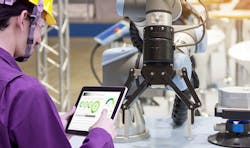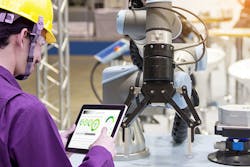What’s the Difference Between Standard and Service Business Models?
Spotify, Netflix, and phone contracts. These are just three thriving examples of selling a service, rather than a product. Jonathan Wilkins, marketing director at obsolete parts supplier EU Automation, explains the importance of servitization in engineering, and what it means for electronic development engineers (see figure).
Whether you’re buying a product, or purchasing something as a service, your experience will change drastically. Let’s stick with the Spotify example. Compared with traditional methods of buying CDs or MP3 files, Spotify users are paying a small amount each month to have access to the latest chart-topping hits. They can cancel their membership whenever they want, so it’s a low-risk commitment. Equally, they don’t have the problem of gathering old and outdated songs—"Baby One More Time” anyone?
Let’s apply this concept to manufacturing and development. Servitization is happening in all industries, from Robots as a Service (RaaS) to the more well-known, Software as a Service (SaaS). In fact, when the idea of Sensors as a Service came along, it’s abbreviation had to be relegated to S2aaS. Catchy.
Servitization is changing the way businesses work and spend.
Clearly, things as a service are in demand, and it’s easy to understand why. The tradition of a single payment for a single product has long been ingrained into the supply chain, but one-time payments are expensive, higher-risk, and require greater levels of commitment.
Let’s say you buy a new human-machine-interface (HMI) display that uses industrial automation software to visualize multiple automation cells. This vital piece of equipment seems great on day one, with the latest software updates and shiny appearance. Yet, will this investment seem worth it in a few years’ time, when the software needs updating and general maintenance is required?
Enter the Service Model
Instead of making a large investment into this HMI, the new alternative is to simply pay a recurring charge for the service of the HMI supplier. You’re not actually paying for the HMI itself as part of a finance deal, but the ongoing service, updates, and technical support. These regular updates from the supplier’s own resources mean that you aren’t left with hardware and software becoming out of date.
It’s less about capital expenditure (CAPEX) and more about ongoing operational expenditure (OPEX). The increased flexibility means trying new services, such as updated manufacturing automation equipment, carries lower risk and less financial investment. But, what does this all mean for electronic development engineers?
Three Slices of the Pie
Firstly, let’s address your legacy equipment. It’s been there for as long as you can remember and forms the backbone of operations. This equipment will probably see little effects from the servitization movement, and that’s okay. Obsolete part suppliers, such as EU Automation, can source replacements for these when needed.
Secondly, and most obviously, is the effects that you may feel from suppliers. What your business buys as part of its CAPEX may soon be shifted into the OPEX realm. For example, the semiconductor industry is notoriously striving for higher-performance, smaller-sized products and lower costs. This sort of change doesn’t happen without some risk, with bold investments and process changes. Yet with servitization, these risks are greatly reduced.
The third consideration for electronic development engineers is the impact servitization has on your customers. Will your product offerings eventually become service rather than a one-time product? The robotics industry is a prime example of this. Rather than charging an upfront cost for industrial robots, and instead form long-standing deals with customers, many manufacturers are moving to the RaaS model. Just a few decades ago, this way of purchasing automation was unheard of.
Whether its robots, sensors, or Spotify, the demand for services over products is increasing. While servitization won’t require facilities to overhaul entire systems due to the huge costs associated with this, it will have significant effects on new business investments. This will be apparent in the increase in OPEX, over CAPEX, and will allow businesses to remain competitive, with minimal risks.
About the Author
Jonathan Wilkins
Marketing Director
Jonathan Wilkins is the marketing director of industrial automation components supplier, EU Automation. A professional brand advocate and commercial marketing strategist, Jon focuses on delivering growth via a multichannel approach that has a significant positive impact on business. He has been part of the EU Automation team since its humble beginning 9 years ago, and has over a decade of experience in marketing.


